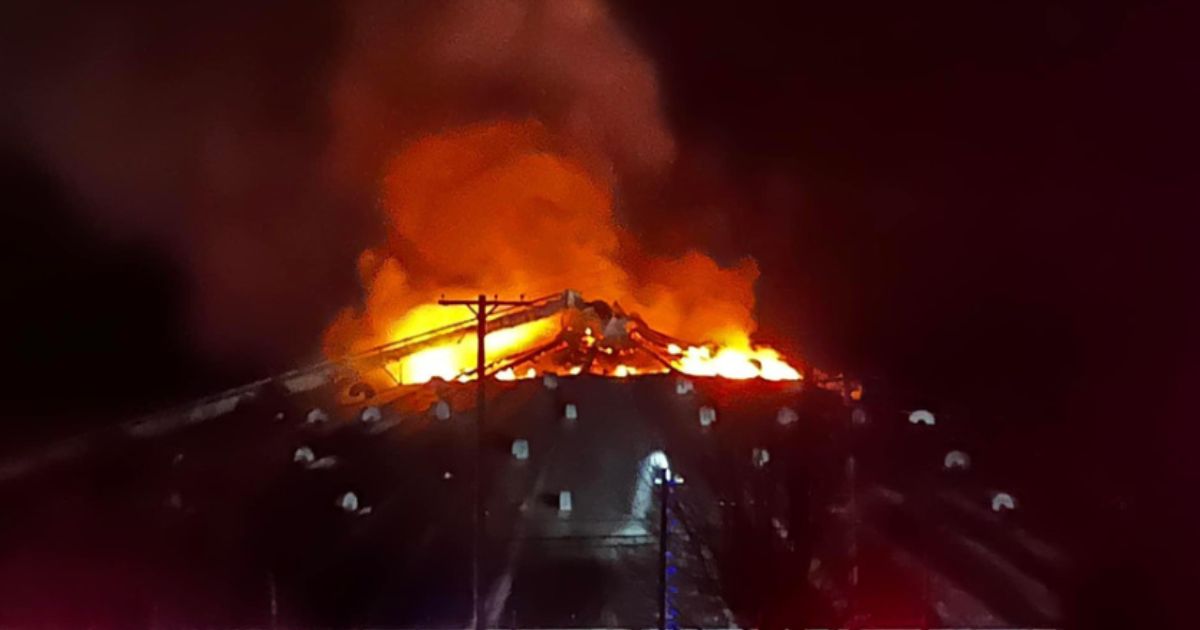Sadly, most people think food on grocery store shelves just appears and is perpetually available. From their perspective, why wouldn’t they believe that? Aside from supply chain interruptions during the peak of the COVID-19 pandemic, there hasn’t been a time in recent history when we’ve lacked stocked shelves 24/7.
It couldn’t be further from reality, though. The number of processes that must happen to turn a field of crops into food on your local supermarket shelf is astonishing, and that’s if everything goes perfectly.
Growing up on a family farm, I can tell you with certainty that farmers and workers in the agriculture industry face a never-ending stack of challenges. A prime example of a significant setback that can affect agriculture supply chains is happening right now in Saginaw County, Michigan, where a large grain fire is burning out of control, according to WJRT-TV.
“A fire is continuing to burn at a Saginaw County grain elevator hours after starting. About 10:10 p.m. on Sunday, Dec. 18, Richland Township firefighters responded to a fire at The Andersons Inc., an agricultural storage and supply company at 485 S. Hemlock Road,” Michigan News Source tweeted Tuesday morning.
A fire is continuing to burn at a Saginaw County grain elevator hours after starting.
About 10:10 p.m. on Sunday, Dec. 18, Richland Township firefighters responded to a fire at The Andersons Inc., an agricultural storage and supply company at 485 S. Hemlock Road. pic.twitter.com/PubWmYr3uZ
— Michigan News Source (@MINewsSource) December 20, 2022
The fire reportedly broke out on Sunday at a Richland Township, Michigan-based grain silo. The out-of-control fire is so intense that multiple fire departments have been called to help battle the fire.
Breaking News: Fire at grain elevator in Hemlock in Saginaw County. https://t.co/KDkhHcJwzA
— Mid-Michigan NOW (@midmichigannow) December 19, 2022
According to WNEM-TV, Richland Township Fire Chief Jeremy Scott explained how severe the fire is and what kind of response it has generated.
“Twenty-nine different departments on scene,” Scott said. “Grain fires oftentimes if we can’t vent it, or it doesn’t vent, can be combustible.”
He said more than 100 firefighters worked to battle the fire on the first night alone. The flames were reportedly so intense that nearby residences were evacuated as a precaution.
“The main challenges we faced today were simply the height of the facility. We were prepared for it with aerial ladders. We had multiple aerial ladders out there and running right now,” he said.
According to Michigan Live, the grain fire could take up to a week to fully extinguish.
Luckily, so far, nobody has been hurt due to the fire. Chief Scott added that the cause of the fire is still under investigation.
While a single grain elevator fire — even one as intense as the Saginaw County fire — doesn’t have much in the way of a national impact on the agricultural supply chain, the concern is that multiple similar incidents can.
Take, for example, fires like the one that burned at an egg processing plant on May 28 in Wright County, Minnesota. The fire, which ignited a 600-foot-long structure, killed tens of thousands of chickens.
During the global supply chain crisis, there were multiple instances of food processing plants catching fire, all of which came at the worst possible time and caused immeasurable issues across the entire agricultural industry as farmers, processors and the logistical side all play a continuing game of catch-up.
The Saginaw grain fire is a reminder of one of the many challenges farmers face after harvesting their fields. The amount of work and risk it takes to get food on the shelves and our tables doesn’t receive near the attention and respect that it deserves.
This article appeared originally on The Western Journal.

























 Continue with Google
Continue with Google